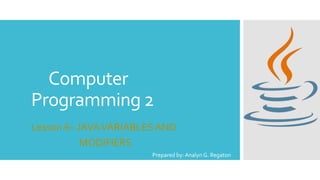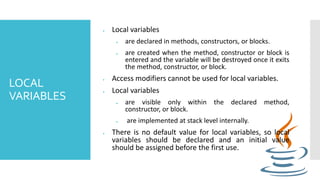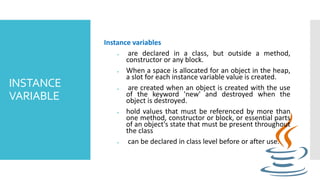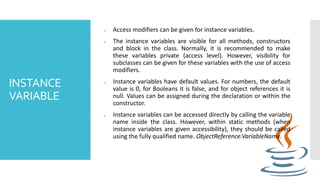This document discusses Java variables and modifiers. It explains that variables store and label data in memory and must be declared before use. There are three types of variables: local, instance, and class/static. Local variables are declared in methods and destroyed after, instance variables are declared in classes and exist throughout the class, and class variables are static and shared among all instances. The document also covers modifiers like access control modifiers (public, private, etc.) and non-access modifiers (static, final, etc.) and provides examples of how they are used.

![JAVA
VARIABLE
A variable provides us with named storage that our programs can
manipulate. Each variable in Java has a specific type, which
determines the size and layout of the variable's memory; the range
of values that can be stored within that memory; and the set of
operations that can be applied to the variable.
You must declare all variables before they can be used. Following is
the basic form of a variable declaration −
Here data type is one of Java's datatypes and variable is the name
of the variable. To declare more than one variable of the specified
type, you can use a comma-separated list.
Data type variable [ = value], variable [ = value] ,,,];](https://image.slidesharecdn.com/computerprogramming2-chapter4-201020055538/85/Computer-programming-2-Lesson-6-2-320.jpg)














